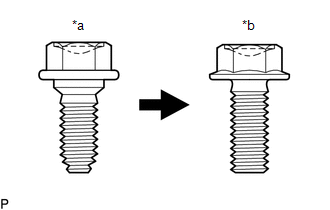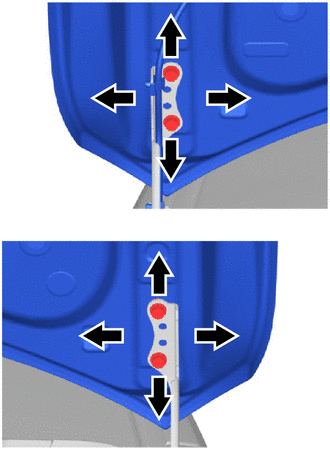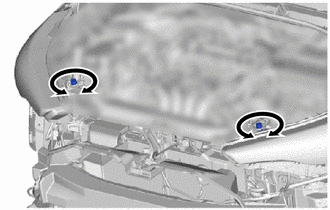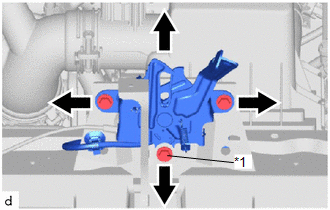Toyota Corolla Cross: Adjustment
ADJUSTMENT
CAUTION / NOTICE / HINT

|
*a | Centering Bolt |
|
*b | Standard Bolt |
HINT:
- Centering bolts are used to install the hood hinges and hood lock. The hood and hood lock cannot be adjusted with the centering bolts installed. Substitute the centering bolts with standard bolts (with washers) when making adjustments.
- The specified torque for standard bolts is shown in the standard bolt chart.
Click here
.gif)
PROCEDURE
1. INSPECT HOOD SUB-ASSEMBLY
Click here
.gif)
2. ADJUST HOOD SUB-ASSEMBLY
(a) Horizontally and vertically adjust the hood.
| (1) Loosen the 4 hinge bolts of the hood. |
|
(2) Adjust the clearance between the hood and front fenders by moving the hood.
(3) Tighten the 4 hinge bolts after adjustment.
Torque:
13 N·m {133 kgf·cm, 10 ft·lbf}
(b) Adjust the height of the front end of the hood using the hood bumper cushions.
| (1) Adjust the 2 hood bumper cushions so that the heights of the hood and fenders are aligned. HINT: Raise or lower the front end of the hood by turning the 2 hood bumper cushions. |
|
(c) Adjust the hood lock.
| (1) Loosen the 2 bolts and hood lock bolt. |
|
(2) Adjust the hood lock assembly and tighten the 2 bolts and hood lock bolt.
Torque:
7.5 N·m {76 kgf·cm, 66 in·lbf}
(3) Check that the striker can engage the hood lock assembly smoothly.





